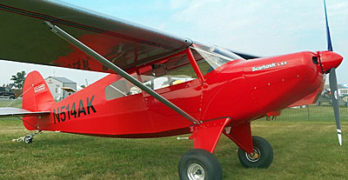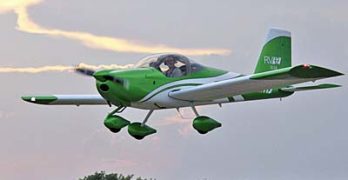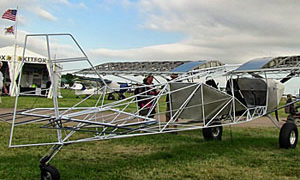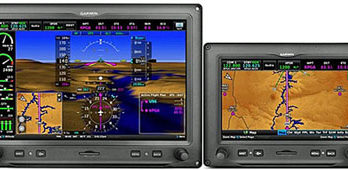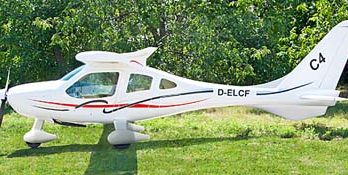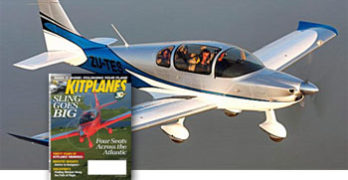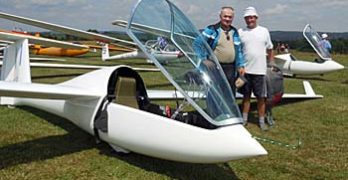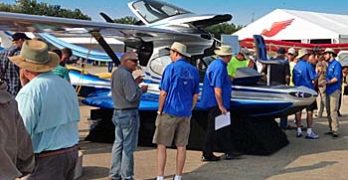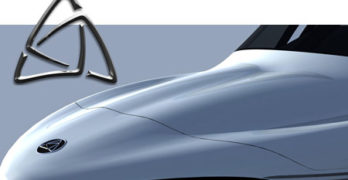Are you lusting after a Cub lookalike but can’t afford the steep price tags these popular flying machines carry? How about something much more affordable? A taildragger called Bearhawk has picked up accolades from AirVenture judges and owners appear very loyal. Sometimes those of us close to factory built Light-Sport Aircraft tend to forget about the homebuilt community. However, more pilots exercising the privileges of Sport Pilot are flying kit-built airplanes than ready-to-fly models, a trend that is likely to continue because a kit represents a lower cost option and one where the owner can more easily do all repair work. Let me clarify, though. Bearhawk is Sport Pilot eligible (using a term my longtime EAA friend, Ron Wagner, coined); it is technically not a Light-Sport. Bearhawk LSA made its debut at AirVenture two years ago as a prototype constructed by its designer, Bob Barrows. Recently a customer flew the first completed kit.
Search Results for : flight design ct
Not finding exactly what you expected? Try our advanced search option.
Select a manufacturer to go straight to all our content about that manufacturer.
Select an aircraft model to go straight to all our content about that model.
Van’s Aircraft Authorizes US Aviation of Texas
Van’s Aircraft has been creating highly successful designs for decades; more than 8,750 RV kits have been completed and are flying. Over 20,000 kits have been sold, cementing this Oregon company as the most successful kit aircraft company in history. In the last couple years, Van’s has enlisted Synergy Air to fully build and deliver their RV-12 Light-Sport Entry. Before the ready-to-fly project began Van’s had delivered more than 250 kit versions; the fleet of both kit and factory built RV-12s keeps growing. When that happens, many buyers — especially those who elected to purchase a factory-built ’12 — need quality places to obtain services for their airplane. Recently a Texas aviation powerhouse, US Aviation and their US Sport Planes division, was approved as a Factory Authorized service center for the RV-12. Company executive Scott Severen, a longtime recreational aircraft enthusiast and businessman, has been very successful at securing similar approvals from many of the top LSA manufacturers.
Post-Oshkosh 2013 Quick Review
At the big show EAA likes to call the Summer Celebration of Flight, we rove the grounds seeking new airplanes, new engines or propulsion systems, new panel gear, updated models and more. In this very fast tour, we’ll zoom around AirVenture for a glance at some airplanes and components that caught our attention. In subsequent posts we’ll delve a bit more deeply into certain ideas we thought were novel. All photos accompanying this article are courtesy of Light Sport and Ultralight Flyer, producer of the 300+ videos you can find on this website.
Rans showed off their new S-20 Raven. Those who thought designer and company boss Randy Schlitter got stuck on S-19 were wrong (it’s never wise to think he’s done designing). His new Raven combines elements of the S-6 and S-7, namely the side-by-side seating of the S-6, with the welded spaceframe and superwide door of the S-7.
Final Newsbits Before AirVenture 2014 Starts
Garmin has a new smaller version of their very impressive G3X Touch. I examined this at Sun ‘n Fun when it was debuted in the 10-inch screen and came away highly impressed after two reviews on videos. For a billion-dollar company Garmin remains passionately inventive and surprisingly nimble. They keep the heat on now introducing a 7-inch G3X Touch display, described as “a high-resolution infrared touchscreen display designed for experimental amateur-built and Light-Sport Aircraft to compliments their existing 10.6-inch G3X Touch system.” Pilots and homebuilders concerned about instrument panel height and width constraints should be pleased to have the 7-inch option. All G3X Touch displays support Connext that allows wireless flight plan transfer between the company’s Garmin Pilot app on an iOS or select Android mobile device. “A well-equipped 7-inch G3X Touch system, which includes SVX, video input, a built-in WAAS GPS receiver, ADAHRS, magnetometer, OAT probe, interactive mapping and more, starts at $4,599,” said Garmin officials.
Crumple Zones Coming to Light Aircraft
For more than 100 years, cars have had accidents and if they were severe enough, the results were poor (photo). This was long before seat belts, airbags, breakaway steering columns, padded dashboards, and many other features we take for granted today. It was also before the concept of crumple zones. Typically, crumple zones are located in the front part of the vehicle to absorb the impact of a head-on collision because 65% of crashes are frontal impacts, according to a British study. Crumple zones accomplish two safety goals: They reduce the initial force of the crash; and they redistribute the force before it reaches the vehicle’s occupants.This idea has been around more than 60 years and has become standard in the modern era of passenger car design. One of the first examples of crumple zone research is coming from Mercedes-Benz in the mid-1950s, so perhaps it is fitting that some of the first crumple zone technology to be applied to light aircraft has the sponsorship of the German government along with German industry players.
Is This the “New GA?” … LSA Four Seaters
Something of a stealth invasion is beginning. I refer to an emerging flock of four seat Light-Sport Aircraft. Of course, most readers are aware that no such birds exist as LSA (in the FAA’s code, anyway). By U.S. regulation Light-Sport are two seat aircraft. Other nations have some different ideas. For now, suffice it to say the “LSA 4s” — as I choose to call them for this article — are on final. In the past I’ve written about Evektor’s Cobra, one of the first in this group, arriving so early that you probably would not call it a “LSA-like” airplane. The southern Czech company enjoyed success with their SportStar and Harmony, smaller siblings to a four seater they flew several years ago. After Evektor (coincidentally also the very first LSA to be approved), we began to hear about Flight Design’s C4 modeled on their LSA market-leading CT series.
Carbon Composite Part 103 Glider / Motorglider
For your weekend enjoyment — and because I am a soaring enthusiast … plus I was sent some interesting photos — consider this slick Part 103 glider, or motorglider (photo). Radek Hucik sent photos of the aircraft performing at a Czech soaring content, where it placed 12th out of 34 competitors. Considering most of the others appear to be conventional sailplanes, one that meets Part 103 at much less weight did well. A high end sailplane can hit or exceed a 50:1 glide angle. This is an amazing performance mark, which translates to flying nearly ten miles from only 1,000 feet of altitude. The XS-12 Saggita manages 35:1 (more specs below) and that is a noteworthy achievement for such a light aircraft. Radek wrote, “[This is] a powered glider that my colleagues and I have developed over the past 20 months. The glider is designed so that it meets Federal Aviation Regulations Part 103 [for] Ultralight Vehicles.
Post-AirVenture 2014 News Review
Summer’s big show is over and most aviation business folks are back home having that love/hate affair with email that piled up while we worked the event. On whole, the success story is strong. Airplanes sold, crowds were good, accidents were few, and the weather was not smoking hot like it has been in years past (though brief rain showers kept folks dashing for cover on occasion). EAA says attendance was up from last year, that the numbers of airplanes was higher, and that campgrounds reached capacity by midweek. EAA’s special 10th Anniversary of Sport Pilot/Light-Sport Aircraft Exhibit drew well all week with 17 aircraft representing all sectors within the SP/LSA space. Visitors could hardly miss the wonderfully central space AirVenture planners offered for this one-year display. With the front corners presenting a bright green Van’s RV-12 plus the freshly debuted MVP seaplane attendees were practically compelled to wander the space and see all the flying machines.
Evektor with Dynon Earns EASA Type Certificate
The very first aircraft ever to receive approval in the USA as a Light-Sport Aircraft is Evektor-Aerotechnik’s SportStar. No challenger can ever take away that title yet the company has continually developed this pioneeering airplane and recently achieved a new level of approval … one that alters the landscape in a way I predict we’ll see more as FAA’s Part 23 rewrite project progresses. “Following several months of certification process EASA has approved glass cockpit Dynon SkyView [as] SportStar RTC,” Evektor announced. RTC stands for Restricted Type Certificate. It is not identical the U.S. Part 23 Type Certificate — representing a somewhat lower level of government oversight — but a company earning this has to jump through many regulatory hoops. “SportStar RTC has become the first EASA certified aircraft approved with the SkyView glass cockpit [by proving] compliance with certification requirements of the EASA CS-LSA regulations. Dynon’s SkyView, recently upgraded to permit touch functionality, is widely known and used on Light-Sport Aircraft.
Versatile LSA Seaplane to Debut at AirVenture 2014
An entirely new Light-Sport seaplane will make its “global debut” at EAA AirVenture 2014 and this is one you’ll want to see up close and in detail. As with a number of other persons, I have been briefed on this new entry and, like the others, I signed a Non-Disclosure Agreement to keep the new project under wraps until company leaders were ready to reveal their new flying machine. At the coming summer celebration of flight in Oshkosh, Wisconsin, everyone will finally get to see what has excited many of those NDA signers. Airshow visitors will see a mockup, but if the full-size concept looks even remotely as good as it did in the computer presentation I was shown, be prepared to be blown away. This boat hull aircraft has features you’ve never even contemplated much less seen on any previous offering. You can guess some of what I’m writing about by their tagline for MVP, “The World’s Most Versatile Plane.” That’s a big claim as we already have many good seaplane designs and more will be following.
- « Previous Page
- 1
- …
- 84
- 85
- 86
- 87
- 88
- …
- 145
- Next Page »


